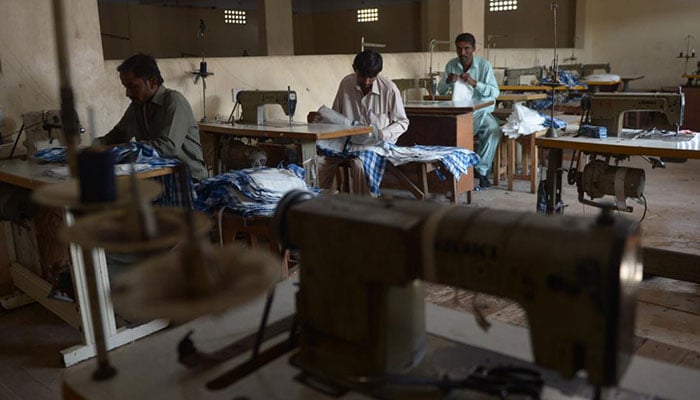Banning labour inspection
PTI had made tall claims to protect workers and oppressed sections of society before forming the government
September 10, 2019

The PTI government in Punjab has imposed a ban on labour inspections, barring the labour department in the province from inspecting factories to check working conditions, safety and the implementation of the labour laws.
The government has reimposed the ban — which was lifted in 2012 by the PML-N government after two major industrial incidents in Lahore in which several dozen workers were killed.
The first ban on labour inspection was imposed by the PML-Q led government of chief minister Pervaiz Elahi in 2003. Workers paid a heavy price to lift the ban in 2012. The ban was a long-time demand of industrialists, and it seems the PTI government has once again obliged them.
The PTI had made tall claims to protect workers and the oppressed sections of society before forming the government. Contrary to its claims and empty promises, now it is protecting the interests of industrialists and big business. This ban is a clear indication of that.
The ban is also an open violation of the constitution, of labour laws and of ILO conventions. Article 3 of the constitution clearly states that: “The State shall ensure the elimination of all forms of exploitation and the gradual fulfilment of the fundamental principle, from each according to his ability, to each according to his work”.
Article 37(e) says: “The State shall make provision for securing just and humane conditions of work, ensuring that children and women are not employed in vocations unsuited to their age or sex and for maternity benefits for women in employment”.
Article 38 (a-c): “The State shall: (a) secure the well-being of the people, irrespective of sex, caste, creed or race, by raising their standard of living, by preventing the concentration of wealth and means of production and distribution in the hands of a few to the detriment of general interest and by ensuring equitable adjustment of rights between employers and employees, and landlords and tenants;
“(b) Provide for all citizens, within the available resources of the country, facilities for work and adequate livelihood with reasonable rest and leisure; “(c) provide for all persons employed in the service of Pakistan or otherwise, social security by compulsory social insurance or other means.”
So it is the basic constitutional responsibility and obligation of the government to introduce laws, rules and regulations to protect workers from all kind of exploitation. Labour inspection, the right to form trade unions and the collective bargaining right are the main tools to minimise the exploitation of the work force. These are also important tools for the working class to improve its working conditions and health and safety at workplaces.
Factories and other workplaces should not become no-go areas for labour department officials and trade union activists. The presence of trade unions and regular labour inspections play a vital role in minimising work-related incidents, abuse and severe exploitation, and improve safety at industries and other workplaces. Genuine representative trade unions hardly exist. And now the government has withdrawn the protection of labour inspection. Workers have been left at the mercy of employers.
Some people are arguing that this ban will not make any big difference because the labour department was not playing its due role anyway. It is true that the labour department never played its proper legal role to implement health and safety rules at industries and other workplaces. It is also true that officials of the labour department were more interested in minting money than implementing labour and safety laws. There were complaints of malpractice and corruption of the labour department. Despite all these weaknesses and shortcomings, labour inspection was still helpful in maintaining some sort of pressure on industrialists.
Instead of banning labour inspections, the government needs to come up with radical reforms in the labour department and labour inspections. A ban on labour inspections is not a solution to the problems faced by industrialists and workers.
The solution is to improve the efficiency, capacity and working of labour inspectors. The government should establish an independent labour inspection authority like the Punjab food or Punjab revenue authorities. Bring the most affected sectors (rural economy, agriculture and construction sectors) under the ambit of labour and OSH laws and the Labour Inspection Authority.
The highest incidence of occupational injuries and diseases is in construction, followed by mining, transport and industrial sectors. The government has to ensure an efficient labour inspection mechanism to address the problem of poor occupational health and safety conditions in the industrial sector. Employers have a legal compulsion to ensure that hazards in the workplace are eliminated, minimised or controlled in such a way that work accidents are avoided.
More than two-thirds of the employed labour force does not enjoy any protection provided under labour and Occupational Safety Hazard (OSH) laws in agriculture, construction, small and medium industries, and informal sector workers including self-employed, home-based and domestic workers.
This ban will aggravate the situation and result in more fatalities in work-related incidents as happened from 2003 to 2012. We need to understand that labour inspections are helpful to improve working conditions and implementation of labour laws including that of a minimum wage. It also helps detect forced labour and child labour at workplaces. Decent work essentially means safe work with decent wage.
There are human, social and economic costs associated with occupational safety, health, incidents, injuries, and diseases. The ILO’s research has indicated that 2.3 million fatalities occur across the world every year.
Another study indicates that the rate of occupational accidents, both fatal and non-fatal, is estimated at 317 million. The economic burden alone is estimated at four per cent of global GDP each year.
The writer is a freelance journalist.
Originally published in The News











